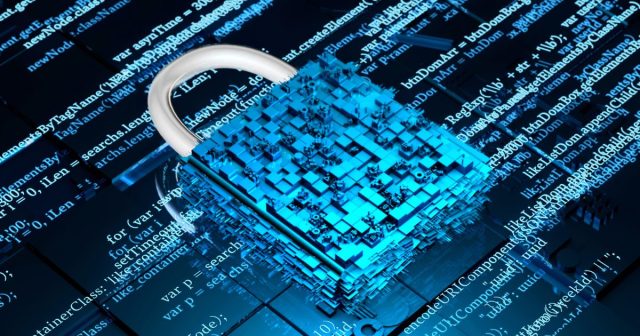
Connect your business network with next-gen collaboration technology
Do you want to deeply modernize your collaboration technology without disruption? To help connect businesses together, we are pleased to…
Lavazza chooses Generix WMS to digitize 4 warehouses. View the press release.

Two Generix Group executives recently tackled this question in the context of the multi-enterprise collaboration that is required today to keep pace with business requirements, with EDI as a critical underlying technology.
Generix’s Mark Sutter, sales account executive[MJ1] , and Ted Hagan, pre-sales solution engineer, joined moderator David Maloney, group editorial director for DC Velocity and Supply Chain Quarterly magazines, in the webinar entitled “EDI’s Evolution & Tomorrow’s Challenges: Are You Ready?”
Sutter began by outlining the history of EDI from its roots in 1948 to exchange shipping information on relief supplies for the Berlin Air Drop on through its more modern applications with computerization in the 1960s. By the 1990s, basic EDI was advanced by the internet and data communications which led way to XML in the 2000s, and since then, SaaS models have taken hold. Now in the 2020s, EDI and its related technologies are evolving rapidly, Sutter noted.
Especially since the pandemic, enterprises are pushing toward automation, greatly driven by continued labor shortages. “Employees are asking higher demands from their employers. In fact, the labor shortage is causing executives to say that 66 percent of their primary motivation for investing in automation technology is the labor shortage, according to Gartner,” Sutter said.
“Disruption is the new normal. For many organizations, the current supply chain challenges have highlighted the pieces of the puzzle that are missing from their supply chain,” Sutter said.
Today’s business and technical requirements require enterprise systems to do more. Generix’s Hagan noted the past 12 to 15 years has seen an accelerated pace of change involving business systems and EDI. “Organizations are struggling to reduce their number of software partners and to meet the diverse needs of their trading partners. They need a simpler integration approach,” he said.
“EDI is no longer just a file transfer from one backend system as the sending company to another backend system at another company, such as from ERP to ERP. Suddenly these EDI translators we’ve got need to do a lot more,” Hagan said. “Organizations are really struggling to figure out how do I do all this given the tools that I have?”
Hagan said: “The data can be in someone else’s system, not just your ERP system. You need to pick that data up and get it to your EDI translator. We’re going to marketplaces, web solutions, and devices. It’s not just a flat file, it’s XML and all its versions, and a number of different file formats have all entered into the mix.”
Hagan outlined the many changes in EDI communication methods. “We’re not just going straight across from point A to point B by a VAN (value-added network) or direct connection. We’ve got APIs involved, email attachments, SWIFT financial information, etc.,” he said.
By necessity, enterprises are patching together a variety of solutions in their EDI infrastructure such as EDI translator software, middleware, communication gateways, API integration solutions and BI tools, among others, in a “system of systems” approach.
“We need a tool that can do things all in one place,” Hagan said. This means a tool that brings together B2B integration, including EDI, XML and other communication forms, and integrations with adaptable connections, while incorporating other technologies such as APIs and IoT.
The call for all all-in-one-place solution that enables collaboration with trading partners means that business and technical users can access information and communicate with their internal and external partners to a greater extent, with greater speed and accuracy, resulting in improved inventory visibility and control of their supply chains.
These B2B EDI integration platforms are replacing EDI translator software and other methods which require technical specialists for running the day-to-day EDI operation and troubleshooting.
Sutter added that rather than burdening business users with manual processes such like data entry, business users are freed to manage the supply chain by exception, while working toward greater collaboration with trading partners, bringing supplier diversification and better engaged employees.
He outlined the Generix Group multi-enterprise collaboration solution. Whether on-premise EDI or delivered in cloud-based EDI SaaS mode, Generix EDI, powered by the Generix B2B TradeXpress Infinity integration platform, enables multi-enterprise integration and collaboration across the supply chain.
The Generix Group multi-enterprise collaboration B2B solutions also include supplier and customer portals, E-Invoicing and AP Automation, and VMI (vendor managed inventory).
Sutter said: “There are so many different areas you may need to integrate with and we do that. Our solutions give you end-to-end visibility, alerts, alarms, reporting, audit trail, analytics, KPI tracking, and business rules management and enforcement, based on rules with specific access and permissions.”
Non-technically capable trading partners, those companies without the EDI infrastructure, can still do business with your organization via the Generix customer portal (order-to-cash) and supplier portal (procure-to-pay), with full functionality to help them do business.

Do you want to deeply modernize your collaboration technology without disruption? To help connect businesses together, we are pleased to…

Understanding what it means to be EDI capable is essential for businesses looking to streamline their operations and improve supply chain efficiency. This guide covers everything from the definition and benefits of being EDI capable to the steps involved in implementing a robust EDI system.

While lesser known than accounts payable automation software, accounts receivable automation solutions automate the capture, validation and process of invoices…

Work with our team to build your ideal supply chain software stack and tailor it to your unique business needs.